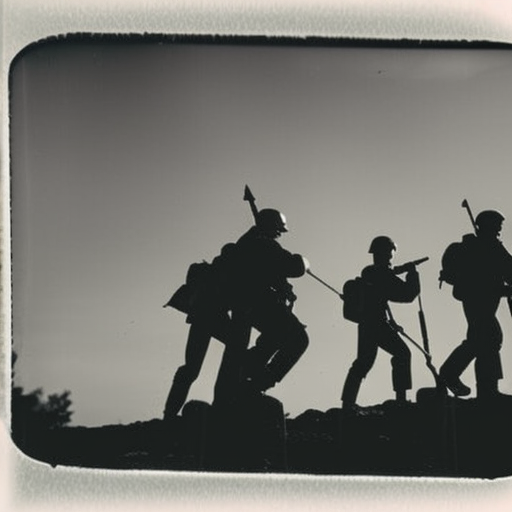Battle of Hill 609: A Fierce Clash in the Tunisian Campaign
The Battle of Hill 609 was a significant engagement that took place during the Tunisian Campaign of World War II. It occurred between April 27 and May 1, 1943, near the town of Djebel Bou Aoukaz in Tunisia. The battle was fought between the Axis forces, primarily consisting of German and Italian troops, and the Allied forces, led by the United States.
The Context: The Tunisian Campaign
The Tunisian Campaign was a series of battles fought in North Africa between the Axis and Allied forces. After the successful Operation Torch, which landed Allied troops in Morocco and Algeria, the Axis forces found themselves trapped in Tunisia. The Battle of Hill 609 was part of the larger effort to defeat the Axis forces and secure control of Tunisia.
The Strategic Importance of Hill 609
Hill 609 was a prominent feature in the rugged terrain of Tunisia. Its commanding position offered a strategic advantage to whichever side controlled it. The hill overlooked the surrounding area, providing excellent observation points and a strong defensive position. Both the Axis and Allied forces recognized the importance of capturing or holding Hill 609 to gain control of the region.
The Battle Begins
The battle began on April 27, 1943, when the Allied forces launched an assault on Hill 609. The American 1st Infantry Division, supported by tanks and artillery, attacked the well-entrenched Axis defenders. The Axis forces, consisting of German and Italian units, put up a fierce resistance, determined to hold their ground.
Fierce Fighting and Heavy Casualties
The battle quickly turned into a brutal and intense struggle. The rugged terrain and the well-prepared Axis defenses made the Allied advance difficult. Both sides suffered heavy casualties as they engaged in close-quarters combat. The fighting continued for several days, with neither side gaining a decisive advantage.
Axis Counterattacks
Recognizing the significance of Hill 609, the Axis forces launched several counterattacks in an attempt to retake the hill. The German and Italian troops, supported by tanks and artillery, launched fierce assaults on the Allied positions. However, the Allied forces managed to repel these counterattacks, inflicting heavy losses on the Axis forces.
The Turning Point
After days of intense fighting, the Allied forces finally made a breakthrough on April 30. They managed to capture a key position on Hill 609, which allowed them to gain a foothold and continue their advance. The Axis forces, realizing they were at a disadvantage, began to withdraw from the hill.
Allied Victory and Aftermath
By May 1, the Allied forces had successfully secured Hill 609. The battle had been a hard-fought victory, with both sides suffering significant casualties. The capture of Hill 609 was a crucial step in the Allied advance towards Tunis, the capital of Tunisia. It provided the Allies with a strategic advantage and paved the way for the eventual defeat of the Axis forces in North Africa.
Legacy
The Battle of Hill 609 was a significant event in the Tunisian Campaign. It demonstrated the determination and resilience of both the Axis and Allied forces. The battle highlighted the challenges of fighting in rugged terrain and the importance of strategic positions. The Allied victory at Hill 609 marked a turning point in the campaign and contributed to the ultimate defeat of the Axis forces in North Africa.
In conclusion, the Battle of Hill 609 was a fierce clash between the Axis and Allied forces during the Tunisian Campaign. The battle was fought for control of the strategically important Hill 609, which offered a commanding position in the rugged terrain. After days of intense fighting and heavy casualties, the Allied forces emerged victorious, securing Hill 609 and gaining a significant advantage in the campaign. The battle’s legacy lies in its demonstration of the challenges of fighting in difficult terrain and its contribution to the ultimate defeat of the Axis forces in North Africa.












